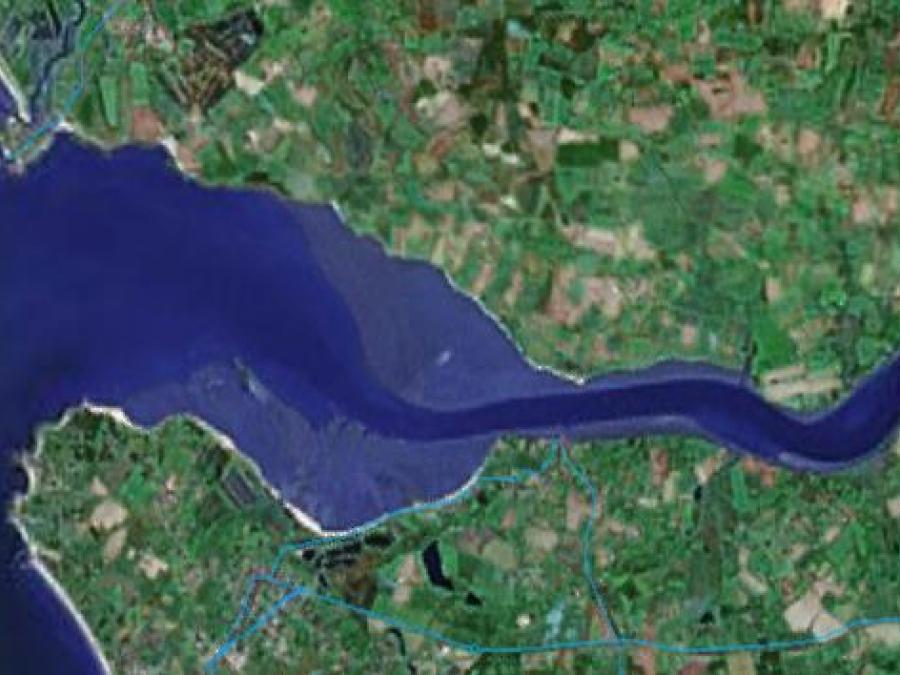(1) A drowned river valley that receives sediment from both landward and seaward sources. Estuary includes salinity gradient from freshwater to marine conditions; (2) Partly enclosed coastal body of water with one or more rivers or streams flowing into it, and with a free connection to the open sea; (3) See more atEstuary. The word "estuary" is derived from the Latin word "aestuarium" meaning tidal inlet of the sea, which in itself is derived from the term "aestus", meaning tide. There have been many definitions proposed to describe an estuary. The most widely accepted definition is: "a semi-enclosed coastal body of water, which has a free connection with the open sea, and within sea water is measurably diluted with freshwater derived from land drainage. However, this definition excludes a number of coastal water bodies such as coastal lagoons and brackish seas. A more comprehensive definition of an estuary is "a semi-enclosed body of water connected to the sea as far as the tidal limit or the salt intrusion limit and receiving freshwater runoff; however the freshwater inflow may not be perennial, the connection to the sea may be closed for part of the year and tidal influence may be negligible". This definition includes classical estuaries as well as fjords, lagoons, river mouths, and tidal creeks. An estuary is a dynamic ecosystem with a connection with the open sea through which the sea water enters with the rhythm of the tides. The sea water entering the estuary is diluted by the fresh water flowing from rivers and streams. The pattern of dilution varies between different estuaries and depends on the volume of fresh water, the tidal range, and the extent of evaporation of the water in the estuary. (4) (biological point of view) – aquatic/marine ecosysytem of transitory type with characteristic peculiarities of bottom morphometry, hydrolocial regime and water balance, those determining presence along its extension of a complex combination of abiotic and biotic factors with expressed periodic and unperiodic variations in values. As a sequence , such a system harbors relatively not many representatives of eurybiotic flora and fauna of mixed origin having especial behavioral, physiological and reproductive adaptations (Komendantov, Orlova 2003).
(1) Воронкообразно расширенное устье реки, как правило, на приливно – отливном побережье. (2) Полузамкнутый прибрежный бассейн, в который впадают одна или несколько рек, имеющий связи с морем (океаном) 4) (биол.) водная экосистема транзитного типа с характерными особенностями морфометрии ложа, гидрологического режима и водного баланса, определяющими наличие на ее протяжении градиента сложного комплекса абиотических и биотических факторов, с выраженными периодическими и неперидическими колебаниями их значений и, как следствие, населенной относительно немногими представителями эврибионтной флоры и фауны смешанногj происхождения, имеющих специфические этологические, физиологические и репродуктивные адаптации. (Комендантов, Орлова 2003).
Joen ja meren suolaisuuden vaihettumisvyöhykkeellä sijaitseva, osittain vedenvaihdoltaan rajoittunut merialue.
Lehtrikujuline jõesuue, tekkinud ookeani- või mereranniku vajumise või meretaseme tõusu tagajärjel.

